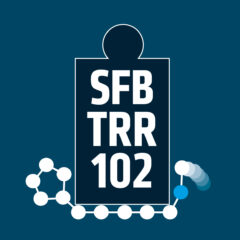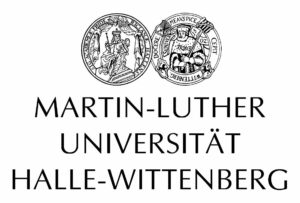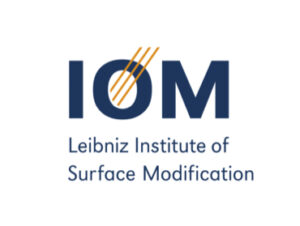Widdra/ Sebastiani
The project aimed at experimental and theoretical characterization and understanding of the structure, conformation, and electronic properties of polymer chains in contact with well-defined surfaces. The combination of scanning tunneling microscopy (STM) and scanning tunneling spectroscopy (STS) with additional surface science techniques under ultra-high vacuum (UHV) conditions focused on the local properties on the length scale of a single polymer segment. The processes of chain folding, crystallization, and slow polymer dynamics under the constraints of surface adsorption were the focus at various temperatures and polymer surface interaction strengths. On the theoretical side, ab-initio calculations of structural and electronic properties elucidated the competition between polymer-polymer and polymer-surface interactions as structural driving forces. The goals of structural characterization and understanding on the atomic scale were state-of-the-art, and only a few groups worldwide had the capabilities to tackle these issues.
At the start of the funding period, the development of a UHV-compatible differentially pumped electrospray deposition system for polymers had been achieved. It was combined with a home-built STM operating at room temperature. The imaging of single molecules on different metal surfaces had been demonstrated in the first funding period for cases where the thermal surface diffusion of individual polymers was significantly slower than the scanning time [1,2]. However, the room temperature STM operation restricted the experiments to polymer-substrate combinations with slow polymer diffusion, e.g., systems with a strong and site-specific polymer-substrate interaction as found on rough or high-index surfaces [1]. To overcome these limitations, it had been proposed to push the experiments to low-temperature STM using a vacuum suitcase sample transfer. The new setup was also expected to open access to the local electronic structure by STS. The planned research program included the analysis of single polymers on 2D templates with varying polymer-substrate interaction, the study of polymer-polymer interaction in 2D and on nanopatterned surfaces, as well as biopolymer imaging with respect to amyloid formation.
In the current funding period, the electrospray deposition process was substantially improved by advanced jet characterization with quadrupole mass spectrometry and a quartz microbalance (Bachelor thesis by Johanna Amelung [5]). Besides organic solvents, water was established as a solvent for biopolymer electrospray deposition (Master thesis by Lukas Steinicke). A larger change of the experimental setup was necessary to enable the UHV transfer from deposition to a dedicated low-temperature STM operating between 30 and 200 K. However, this improvement paved the way for polymer imaging with full side-chain resolution and local spectroscopy by STS as shown below.
Highlighted Publications:
- Laura Katharina Scarbath-Evers, René Hammer, Dorothea Golze, Martin Brehm, Daniel Sebastiani and Wolf Widdra, From flat to tilted: gradual interfaces in organic thin film growth Nanoscale 12, 3834-3845 (2020)
- L. K. Scarbath-Evers, M. Todorović, D. Golze, R. Hammer, W. Widdra, D. Sebastiani, and P. Rinke, Gold diggers: Altered reconstruction of the gold surface by physisorbed aromatic oligomers. Physical Review Materials 3, 011601(R) (2019)
- S Förster, E. Kohl, M. Ivanov, J. Gross, W. Widdra, and W. Janke , Polymer adsorption on reconstructed Au(001): A statistical description of P3HT by scanning tunneling microscopy and coarse-grained Monte Carlo simulations J. Chem. Phys. 141, 164701 (2014)
Other publications of this group:No posts found.






